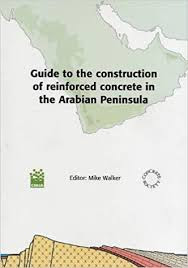Guide to the construction of reinforced concrete in the Arabian peninsula
- Overview
This book provides those working with reinforced concrete in the Arabian Peninsula with information and guidance on the production of high-quality, durable concrete, able to withstand the region’s extremely harsh environment. Much of the guidance is also applicable to concrete construction in other hot-wet and hot-dry environments around the world. The principles set out in the Guide are applicable for the whole range of construction activity, from small-scale building works to large civil engineering projects.
The Guide is in four parts. The first outlines the principles underlying the successful use of concrete construction in the Arabian Peninsula. The extreme environment and the geological and geomorphological conditions are discussed in detail. The second part provides a comprehensive guide to the materials available. Execution of concrete works is covered in the third part, while the final part presents guidance on mix design. Appendices provide data on local climate and on formwork pressures. A detailed subject is included. The book was prepared by a working party as part of a collaborative project between CIRIA and The Concrete Society, working with authorities and organisations based in Arabia.
- Abstract
Outlines the principles underlying the successful use of concrete construction in the Arabian Peninsula. The extreme environment, and the geological and geomorphological conditions, are discussed in relation to these principles. Provides guidance on the materials available. Covers site operations and guidance on mix design. Also includes data on local climate and formwork pressures.



